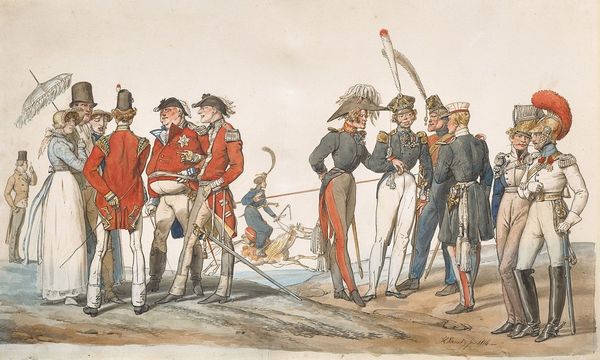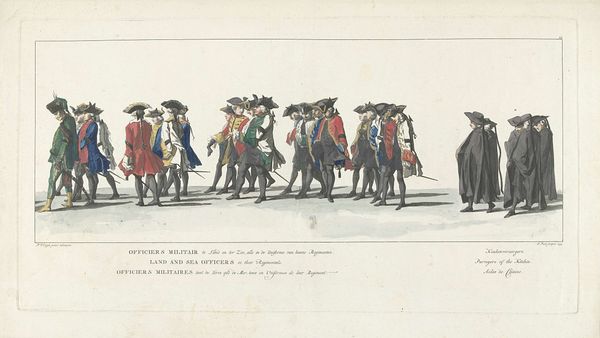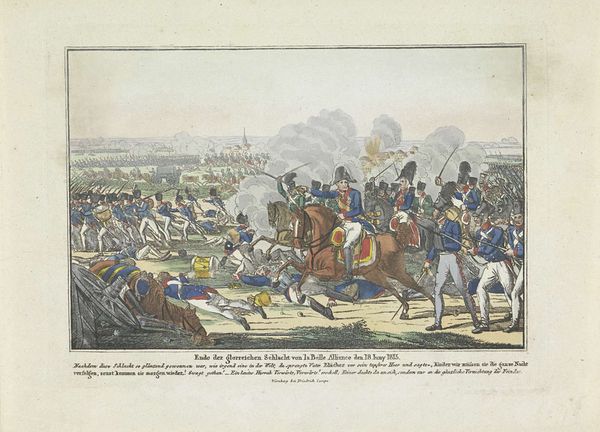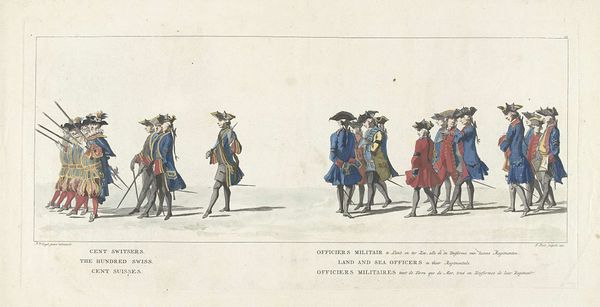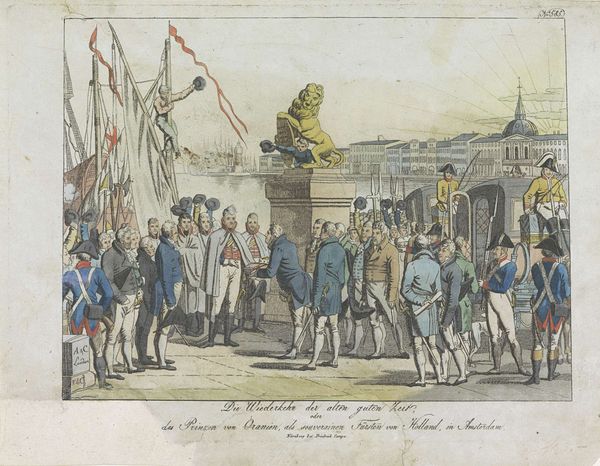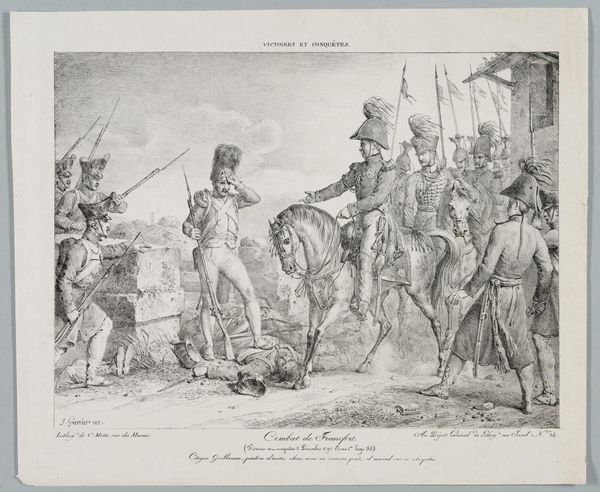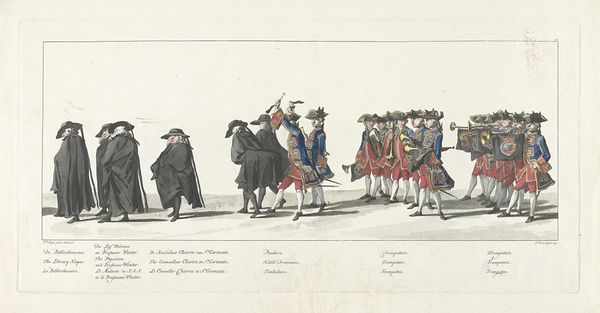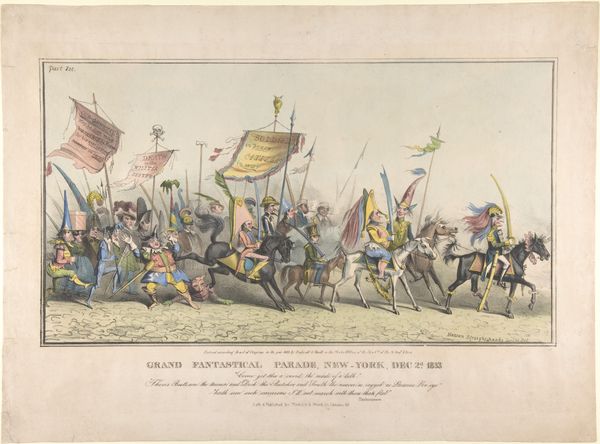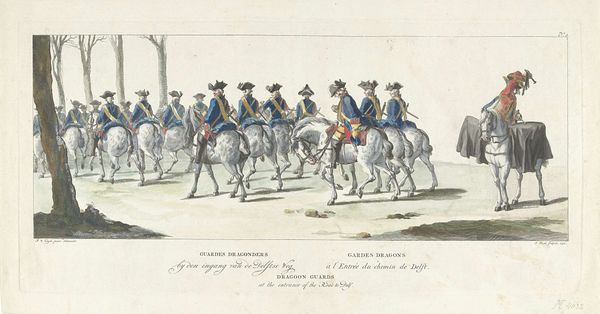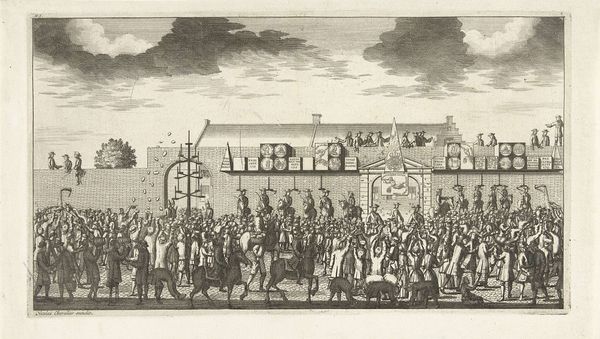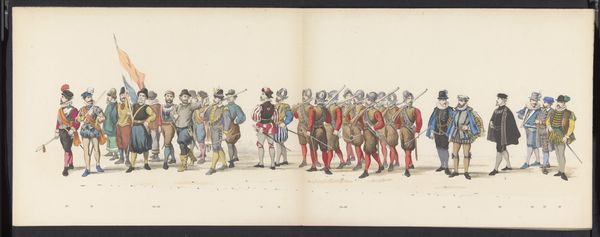
print, etching
narrative-art
etching
caricature
figuration
romanticism
history-painting
Dimensions: height 182 mm, width 256 cm
Copyright: Rijks Museum: Open Domain
Curator: Here we have Johann Michael Voltz's etching, "Napoleons leger trekt weer ten strijde, 1815," likely created between 1815 and 1816. Editor: My initial thought? It's a rather grotesque parade! So much emphasis on caricature. Curator: Precisely! It’s a deeply political piece. We must consider the historical context: Napoleon's return from exile and the subsequent Hundred Days. This etching is brimming with anxieties about his resurgence, especially felt across Europe, as the print circulated widely. We see how anxieties about Napoleon’s rise were communicated, which brings into focus what issues related to class, gender, or other hierarchies of power, are touched by or exacerbated in this print? Editor: I am more concerned with the craft and materiality here. The etching process allows for mass production and broad distribution. It provided an avenue for accessing and swaying popular opinion. How might the printing houses be related to political movements or emerging capitalist forces at play? The quick and efficient replication afforded by the medium speaks volumes about how propaganda and even anxieties themselves became commodities. Curator: The individual caricatures speak volumes too. Look at the exaggeration of features, the disproportionate bodies… they embody a broader sentiment of ridicule towards Napoleon and his forces, but are not the armies a representation of broader culture, in a sense? And don’t such representations fall on people differently, as an uneven power-relationship, as some have a higher or lower ‘distance to power?' We ought to be aware how images operate as acts of denigration through stereotypes. Editor: I do see your point. It certainly plays on prevailing perceptions. Note the repetitive nature of the print-making process itself; each impression serves as another nail in the coffin of Napoleon's image. It cheapens the idea of his Empire, making it disposable. The method used to craft the images influences, therefore, the emotional and social dimensions, and the means through which narratives surrounding history play out. Curator: A critical lens allows us to investigate those methods in tandem with their wide impact. We cannot forget that art exists, operates, and means, within the broader complexities of identity. Editor: A fitting summary that underscores the interconnected nature of making, materials, and messaging within its time. Curator: Exactly. And our role as curators to bridge those discussions to now!
Comments
No comments
Be the first to comment and join the conversation on the ultimate creative platform.
